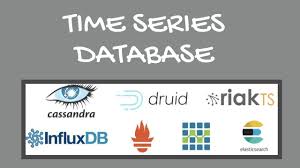White Paper: Time Series Databases: A Comprehensive Guide
Introduction
Time series databases (TSDBs) are specialized database systems designed to efficiently handle and store time-stamped data. They are optimized for handling large volumes of data points collected over time, making them ideal for applications such as IoT, telematics, finance, and scientific research.
Understanding Time Series Data
Time series data consists of a series of data points, each associated with a specific timestamp. This data is often generated continuously from various sources, such as sensors, applications, and network devices.
Key Characteristics of Time Series Data:
- High Volume: Large amounts of data are generated over time.
- High Velocity: Data is generated rapidly and continuously.
- High Variety: Data can be numerical, categorical, or textual.
Challenges in Storing and Analyzing Time Series Data
Traditional relational databases are not well-suited for handling time series data due to the following challenges:
- Storage Efficiency: Relational databases often store redundant data, leading to inefficient storage.
- Query Performance: Complex queries, especially those involving time-based aggregations, can be slow.
- Scalability: As data volumes grow, relational databases may struggle to handle the increased load.
Time Series Database Solutions
To address these challenges, specialized time series databases have emerged. These databases offer optimized storage, query, and analysis capabilities for time series data.
Key Features of Time Series Databases:
- Time-Based Indexing: Efficiently indexing data based on time, allowing for fast time-range queries.
- Compression: Reducing storage requirements by compressing data.
- High Write Throughput: Handling high volumes of incoming data.
- Efficient Querying: Supporting complex queries, including aggregations, filtering, and joins.
- Scalability: Easily scaling to handle increasing data volumes and query loads.
Popular Time Series Databases:
- InfluxDB: An open-source time series database designed for IoT and real-time applications.
- TimescaleDB: An extension of PostgreSQL that adds time series capabilities.
- Prometheus: An open-source monitoring system and time series database.
- ClickHouse: A high-performance columnar database suitable for analytics and data warehousing.
- TDengine: A high-performance time series database optimized for IoT and industrial applications.
Best Practices for Implementing Time Series Databases
- Data Modeling: Design a clear data model, considering data granularity, retention policies, and query patterns.
- Data Ingestion: Use efficient data ingestion methods to minimize latency and maximize throughput.
- Data Storage and Compression: Select appropriate storage formats and compression techniques to optimize storage and query performance.
- Query Optimization: Write efficient queries and use indexes to improve query performance.
- Monitoring and Alerting: Monitor database performance and set up alerts for potential issues.
- Security and Access Control: Implement robust security measures to protect sensitive data.
Conclusion
Time series databases are essential tools for handling and analyzing time-stamped data. By understanding their key features and best practices, organizations can effectively manage and extract insights from their time series data, leading to improved decision-making and business outcomes.
References:
- InfluxDB Documentation: https://docs.timescale.com/
- Prometheus Documentation: https://clickhouse.com/
- TDengine Documentation:
By leveraging the power of time series databases, organizations can unlock the value of their time-stamped data and gain a competitive edge.



